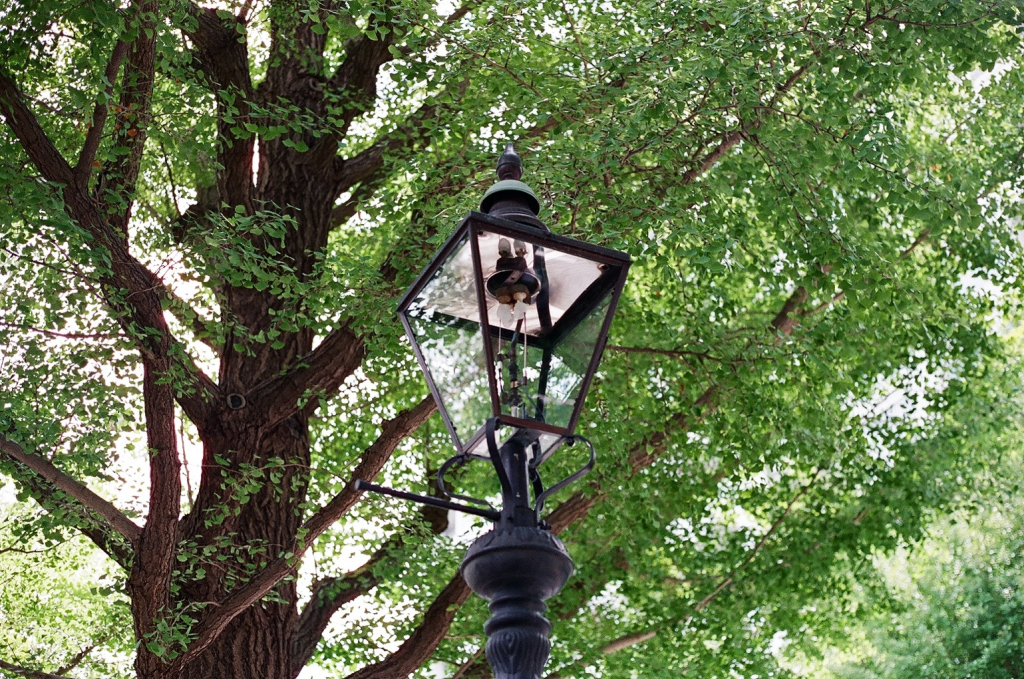Tokyo is a world of lights. From neon billboards, glowing vending machines and traditional lanterns to illuminations and fireworks, this 24-hour city is constantly shining for its swirling mass of people.
With all these impressive displays of light around, it’s easy to miss the more outdated — but perhaps more architecturally significant — humble lamppost. What debuted as the first gas-powered street light in Japan in the late 1800s when the country reopened its borders to the outside world after many years, Western lampposts were the first to light up the streets of Tokyo; a foreshadowing of the glitzy city it would soon become.
Today, a superb network of electric lampposts and ornate street lanterns flicker up above, and if you do catch sight of one amongst the shimmering noise, it’s a most delightful experience. They’re just all so unique and seem to differ from ward to ward, too. Maybe it’s also their air of mystique and nostalgia, but Tokyo’s lampposts have fast become my personal favorite type of light around this city of ours and it’s time to pay them tribute. Here are some of the most interesting lampposts around town; from the ornate and antique, to the weird, the wacky and the wonderful.
Shinjuku
Known as the neon capital of Tokyo, Shinjuku has many interesting streetlamps. Eager tourists flock to take photos of the bustling main streets or the conspicuous Godzilla poking his head from the top of the TOHO building, but photographic moments can also be found in the quietest of places. This half-hidden, candelabra-like lamp is certainly evidence of that:
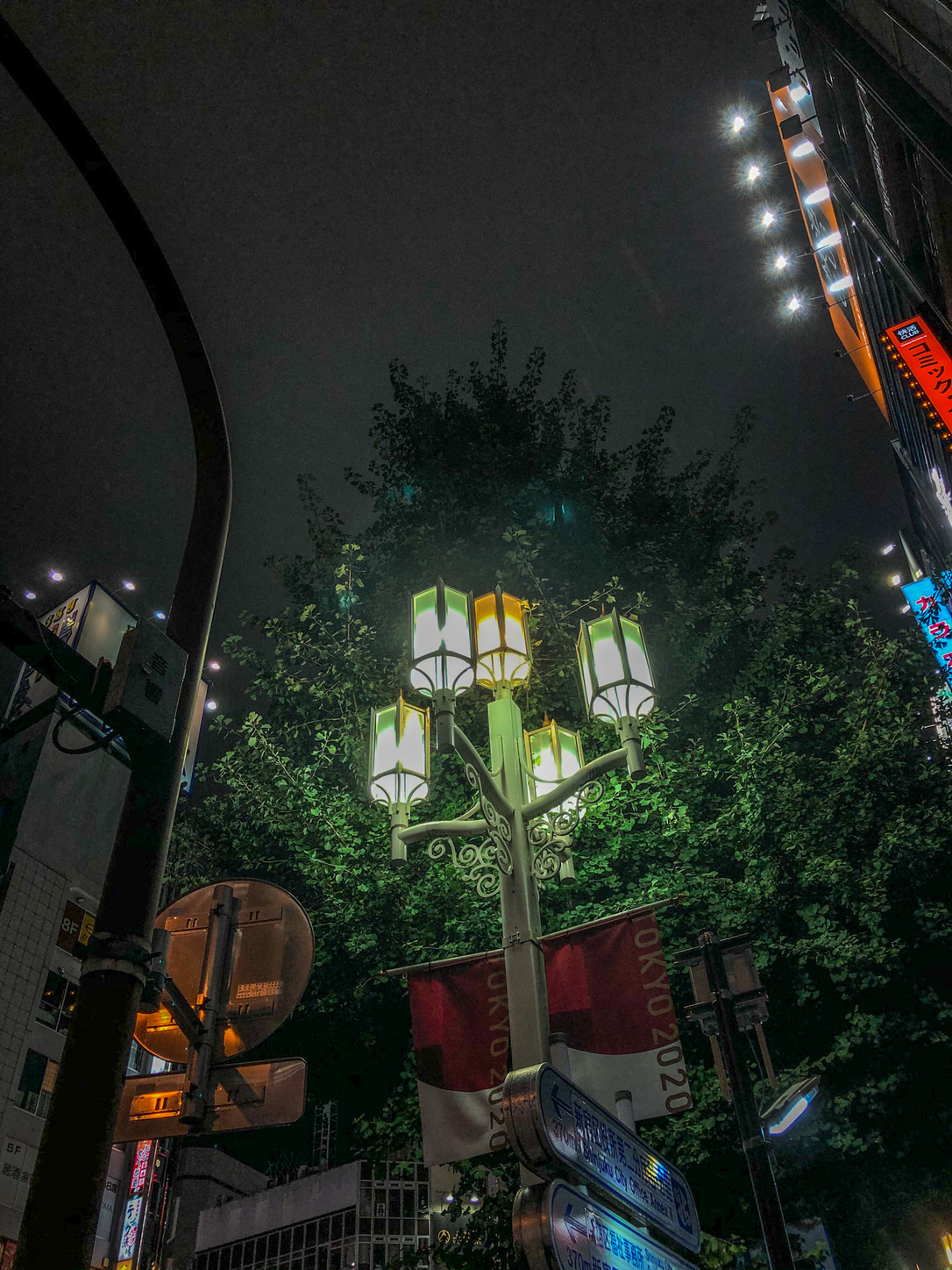
Golden Gai, the famous conglomerate of rickety bars dotting dark alleyways, is lit up by staggering, prismatic lights. It wasn’t always a Shinjuku staple spot, coming a long way since the 1950s when it was known for dark deeds and not much else. Blossoming into a hubbub of karaoke, rock and 80s music, many eclectics found their home. Its dark history is now overshadowed by its shine.
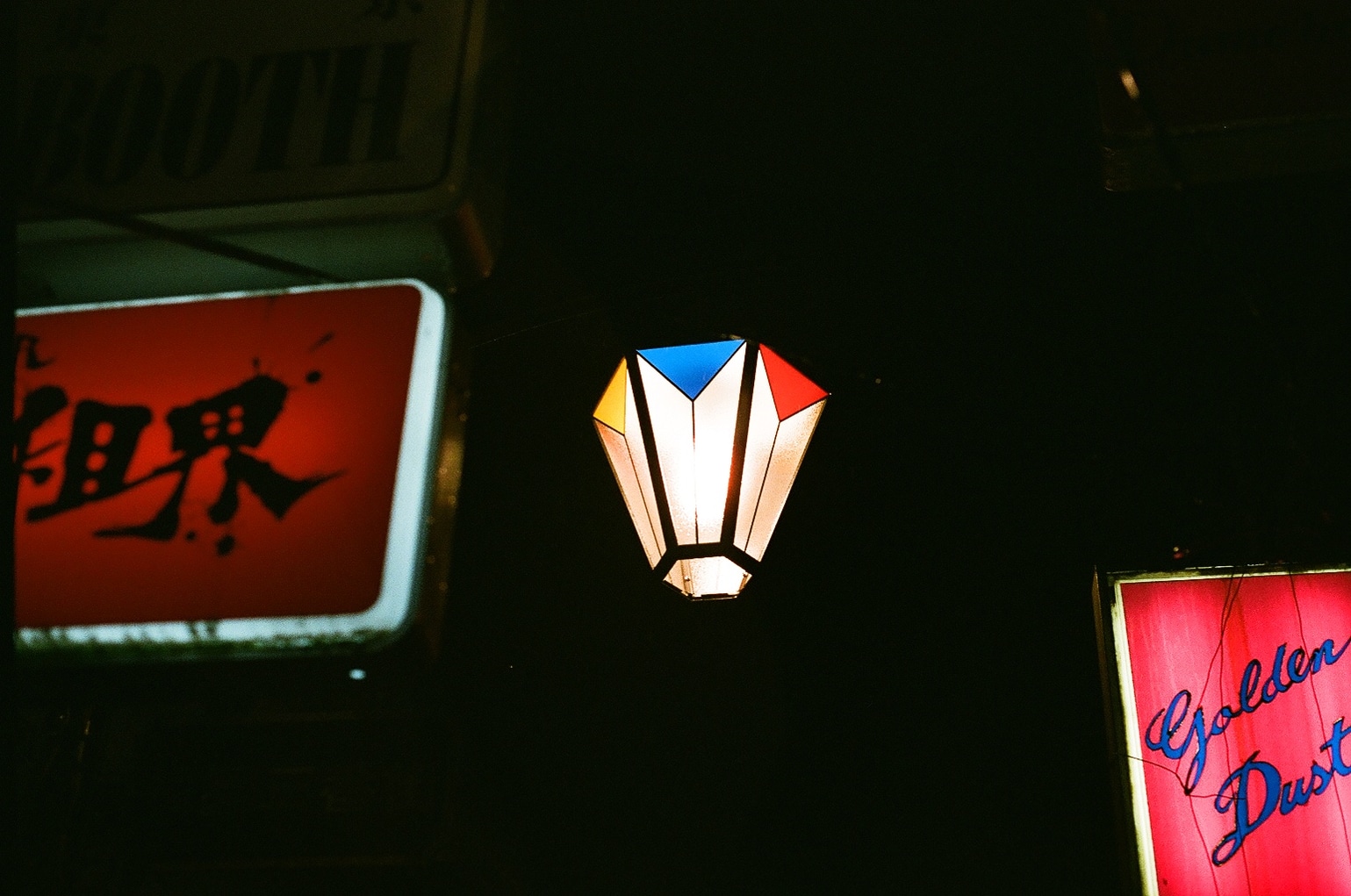
Photo by Jamie McBride
Ogikubo
Known as the birthplace of Tokyo ramen, Ogikubo is an eclectic mix of old and new. If you turn left out of Nishi-Ogikubo station, you’ll find a plethora of blazing lanterns with fairy lights spiraling the posts. Turning right will take you to more antique-looking ones, like these two-toned bulbs:
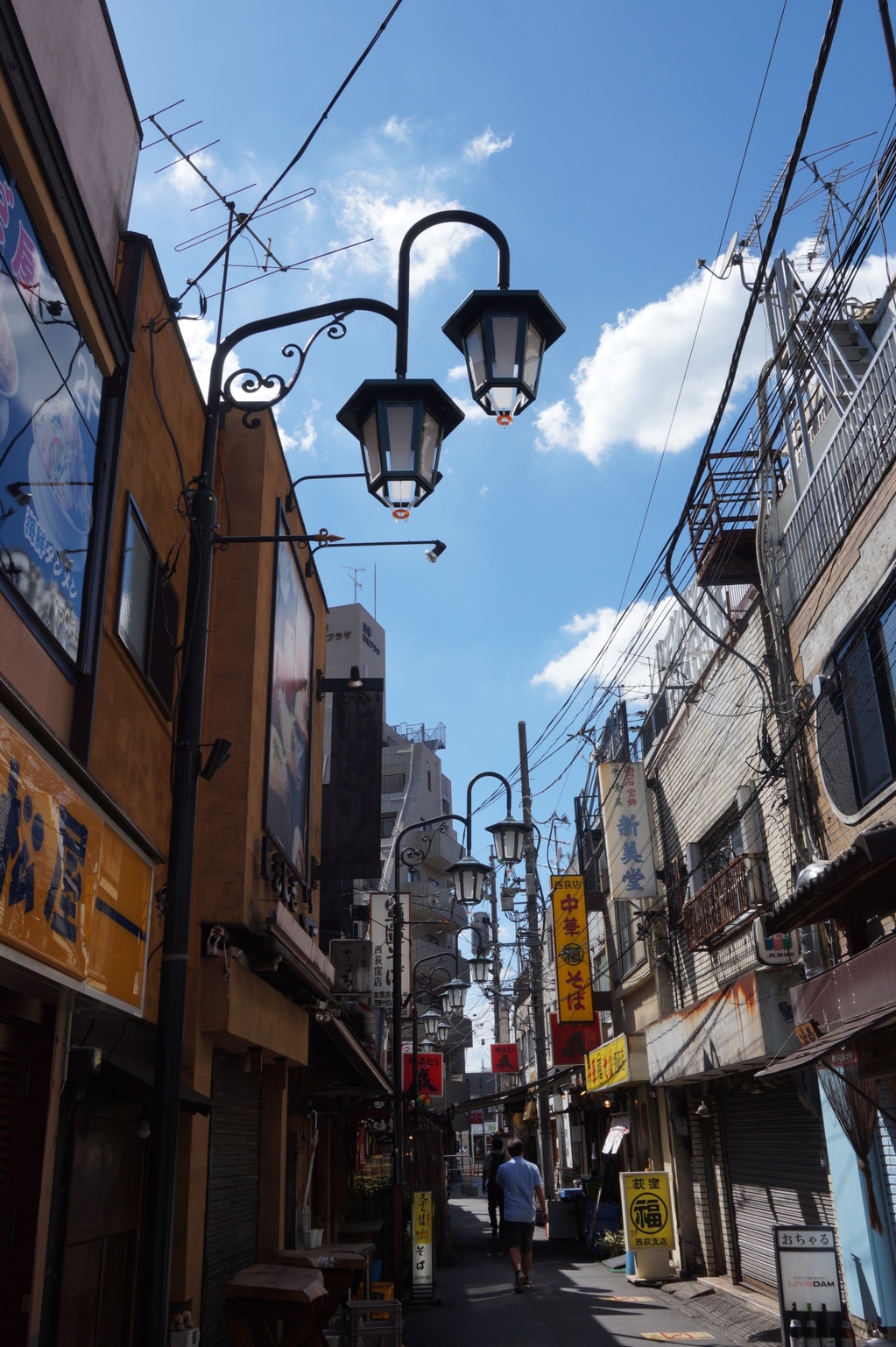
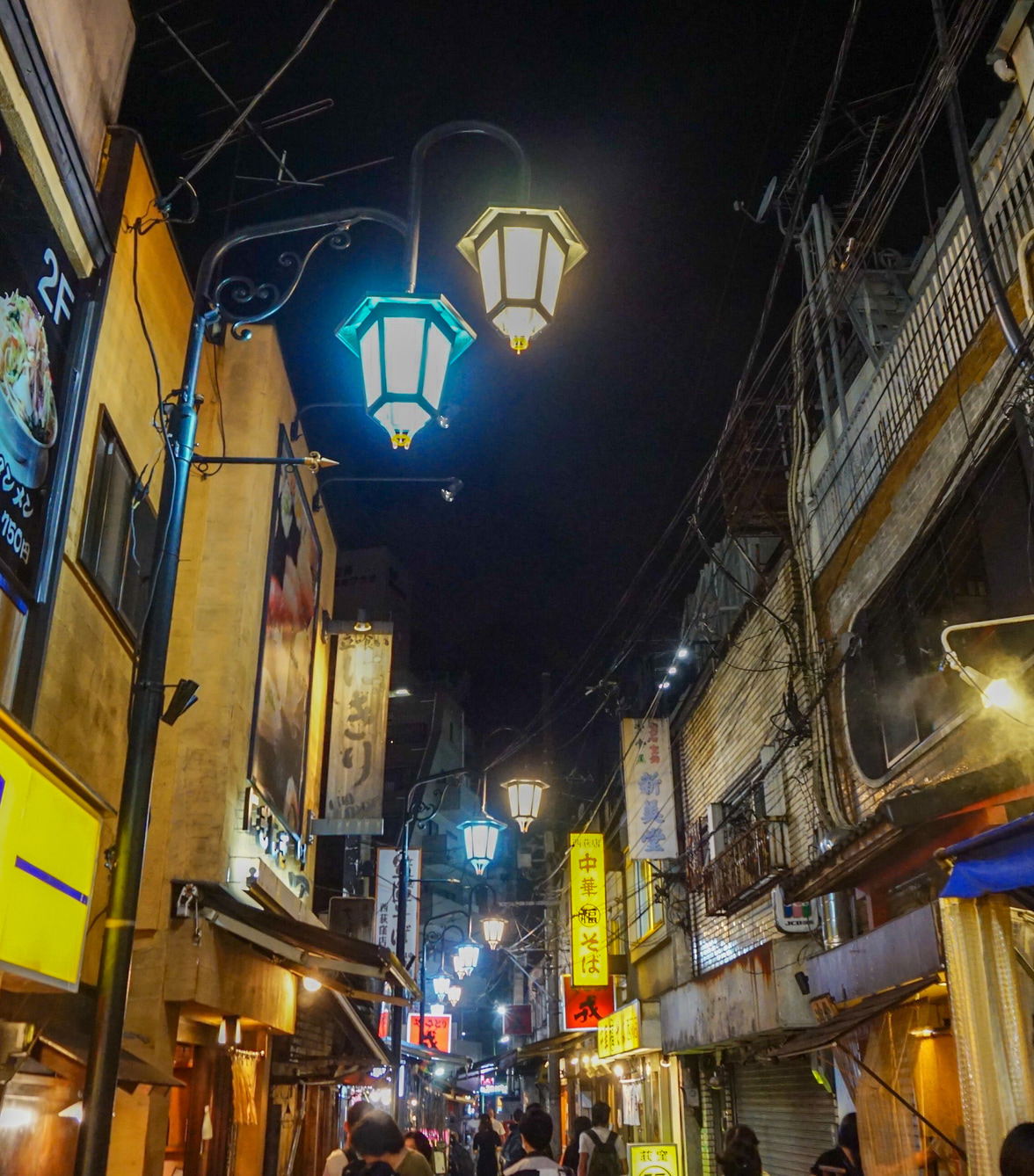
Yokohama
According to the records, it was the city of Yokohama that saw the first gas-lit lamppost in Japan. Technically forming part of the greater area of Tokyo, Yokohama today is riddled with beaming globes. Right by the station, there are soccer-ball-shaped ones, and Yamashita Park has some spectacular beacons of light, as well.
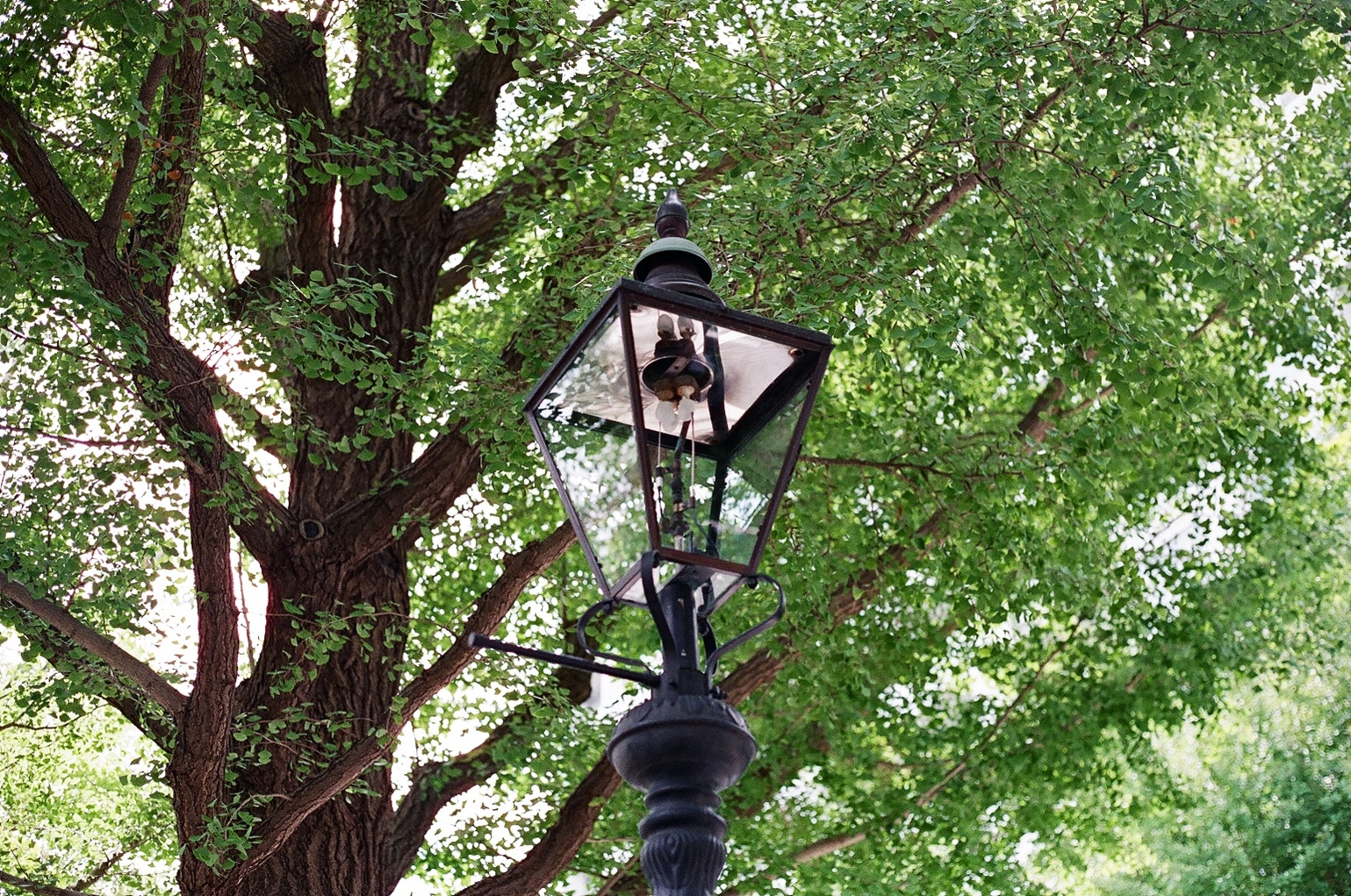
Photo by Jamie McBride
This other lamppost from deep within Chinatown takes on a certainly interesting shape. Its elongated form is reminiscent of two Chinese lanterns side-by-side, complementing the vibrant entrance gates and diverse restaurants found in the area:
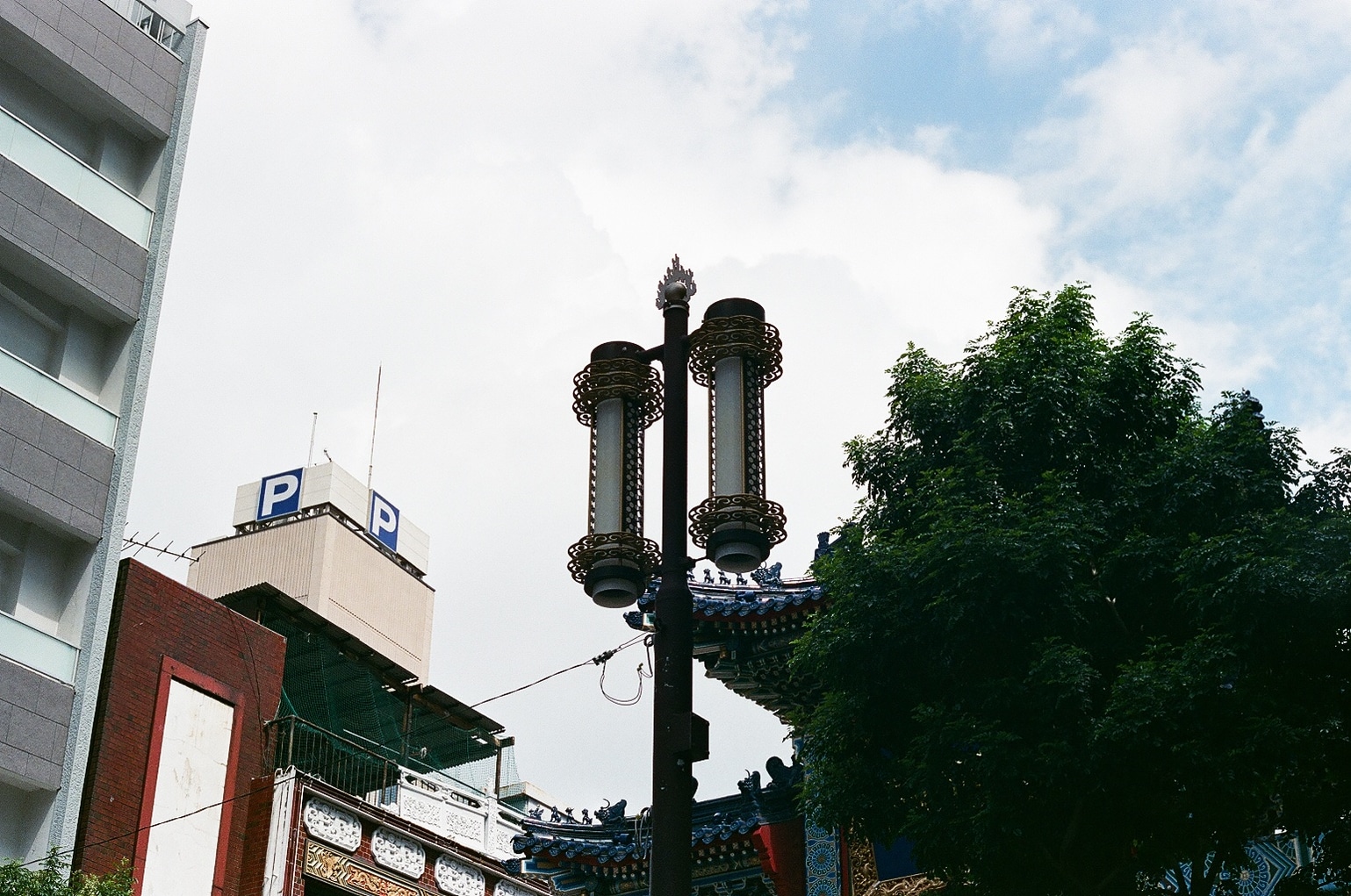
Photo by Jamie McBride
This square, multi-colored glass number is just so quintessentially quirky of the Noge neighborhood: a charming suburb of Yokohama that keeps the spirit of post-war Japan alive and well:
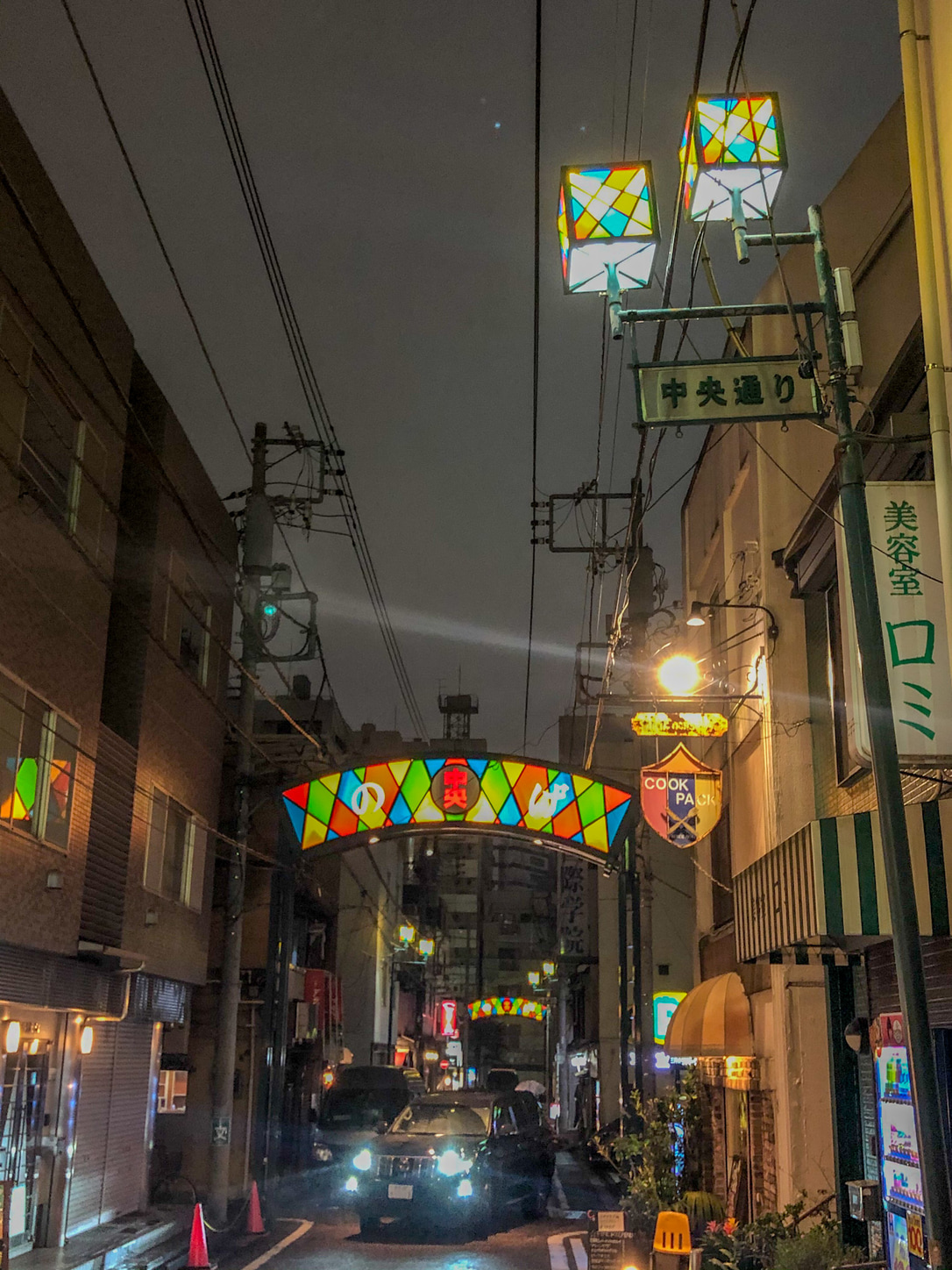
Yanaka
A rustic ambiance reminiscent of old-day Tokyo, Yanaka is also the neighborhood where you’ll see cats and creative arts aplenty. Its lamps pay equal tribute to its quaint, Shitamachi charm. This beautiful light juts out just to softly throw light upon the historic mural nestled behind it:
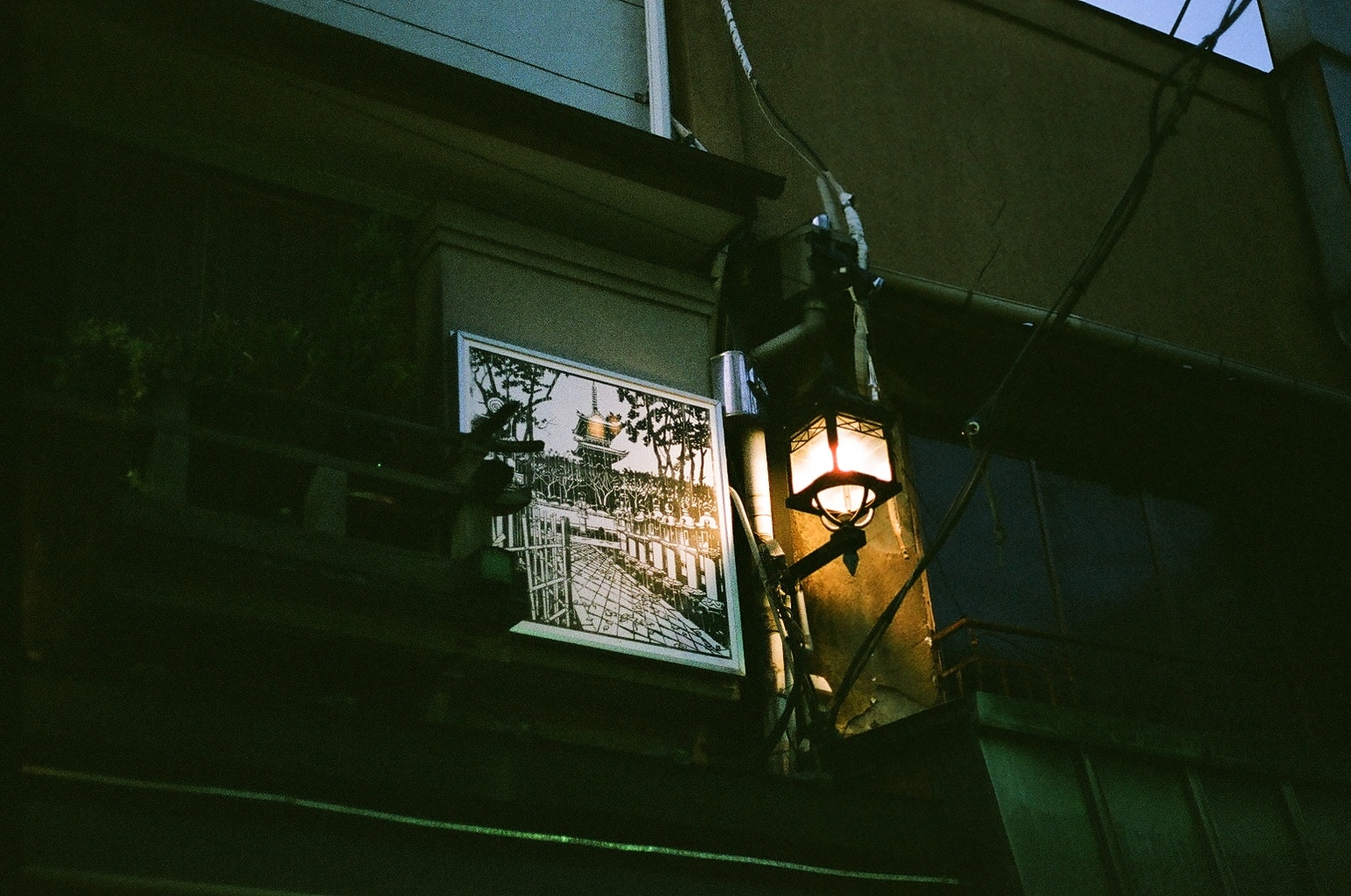
Photo by Jamie McBride
Ginza
The huge fire of 1872 led to Ginza being reborn as a Westernized “bricktown”. Department stores moved in, along with tourists from around the world. Consequently, the lights here are more old school ‘Georgian style’ than ever. If you only looked up, you might believe you were walking along the streets of London, not Tokyo.
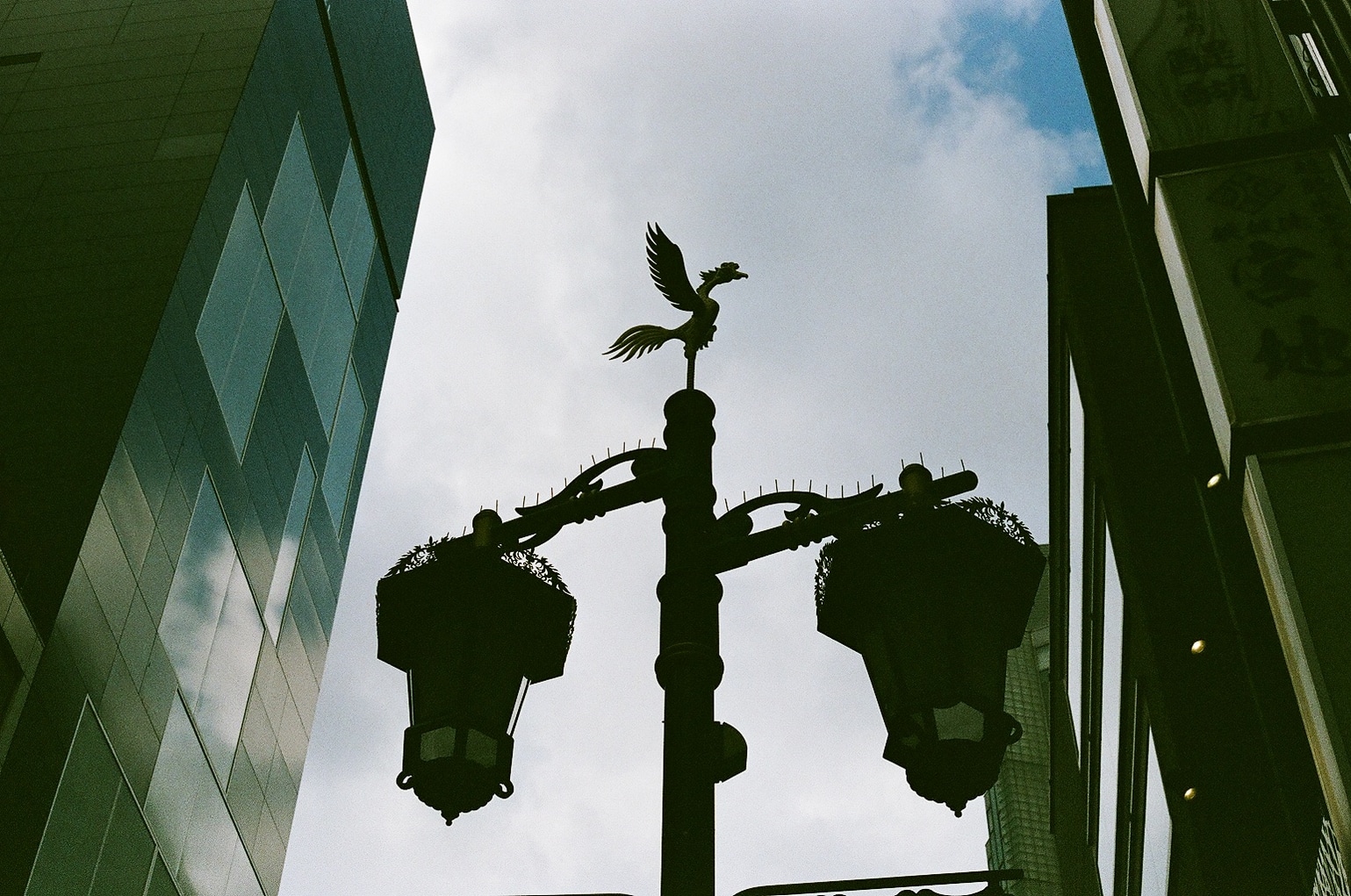
Photo by Jamie McBride
Nakano
Nakano is known as, a collector’s haven, home to a parade of delicious restaurants and one of the wackier areas of Tokyo. Here you’ll find many clusters of peculiarly shaped lights – but the ones which stand out most are these triangular stained-glass lanterns, each with a different symbol.
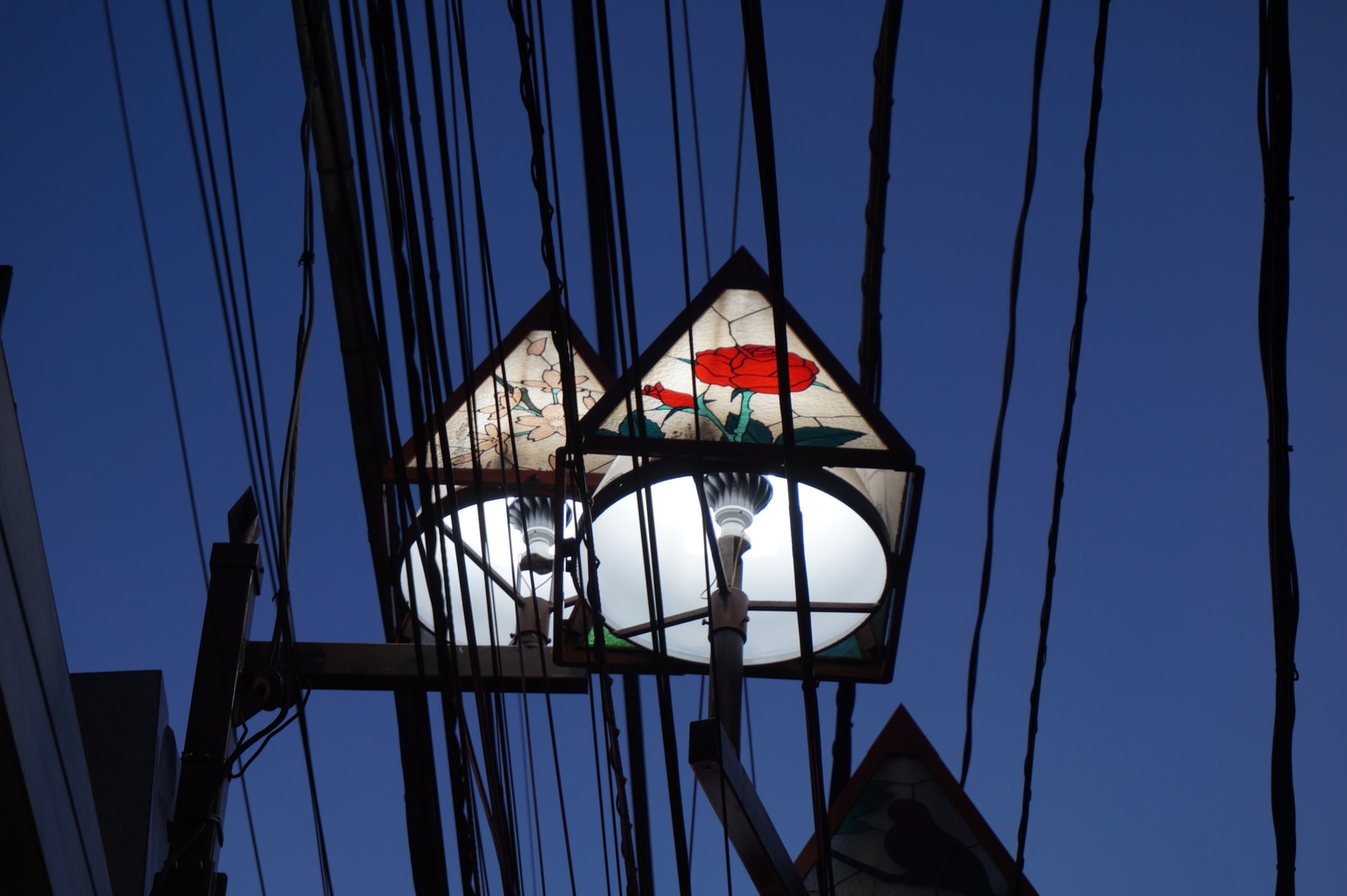
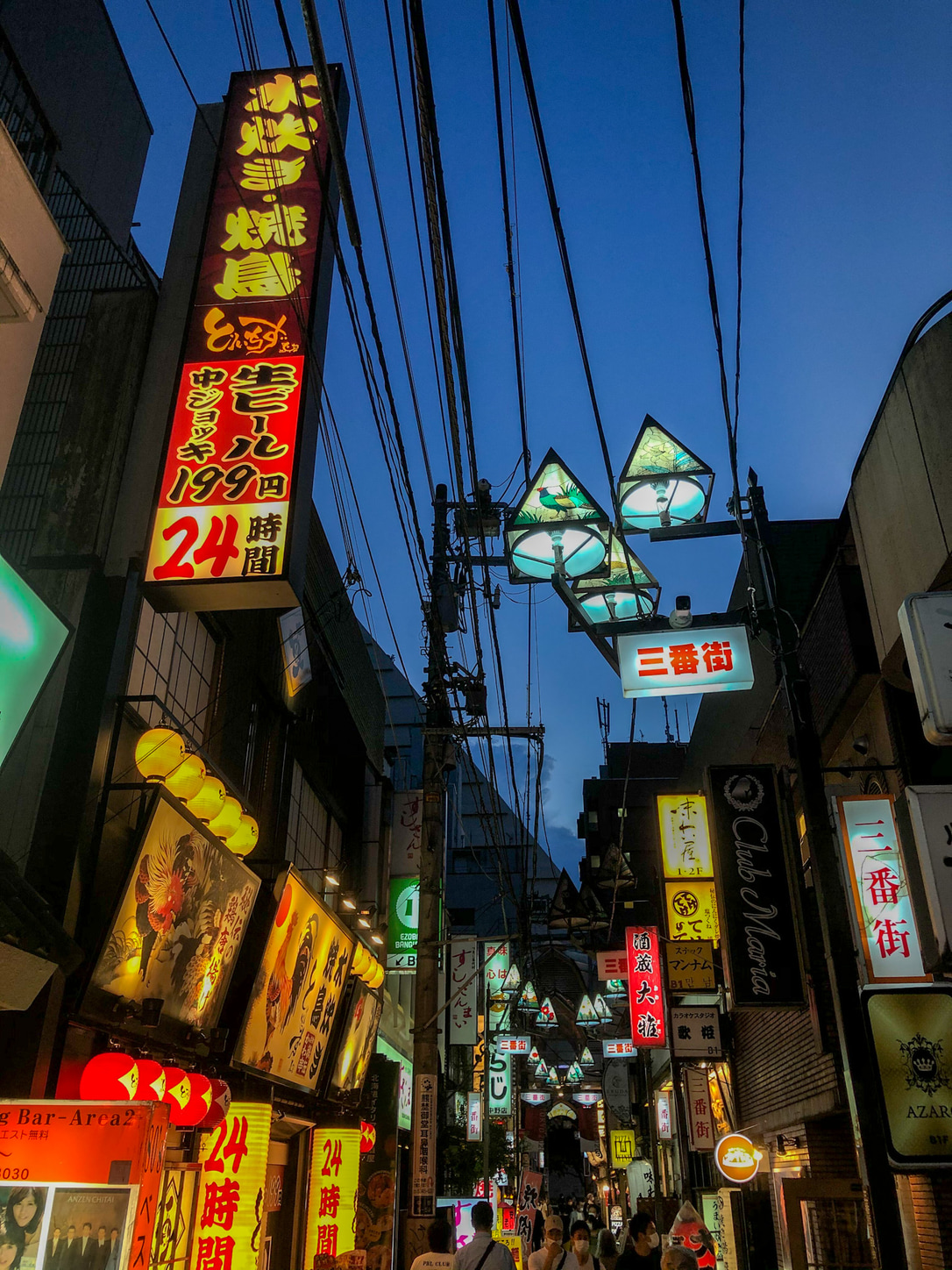
Hopefully, this photographic homage paid to these underrated light forms may encourage us to look at our area with new, fresh eyes – and engage with the objects we sometimes take for granted.

